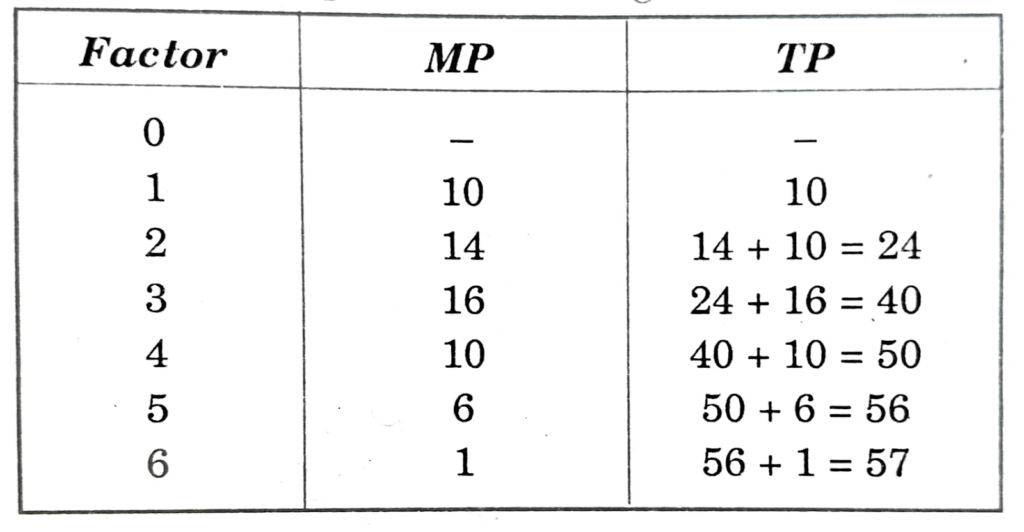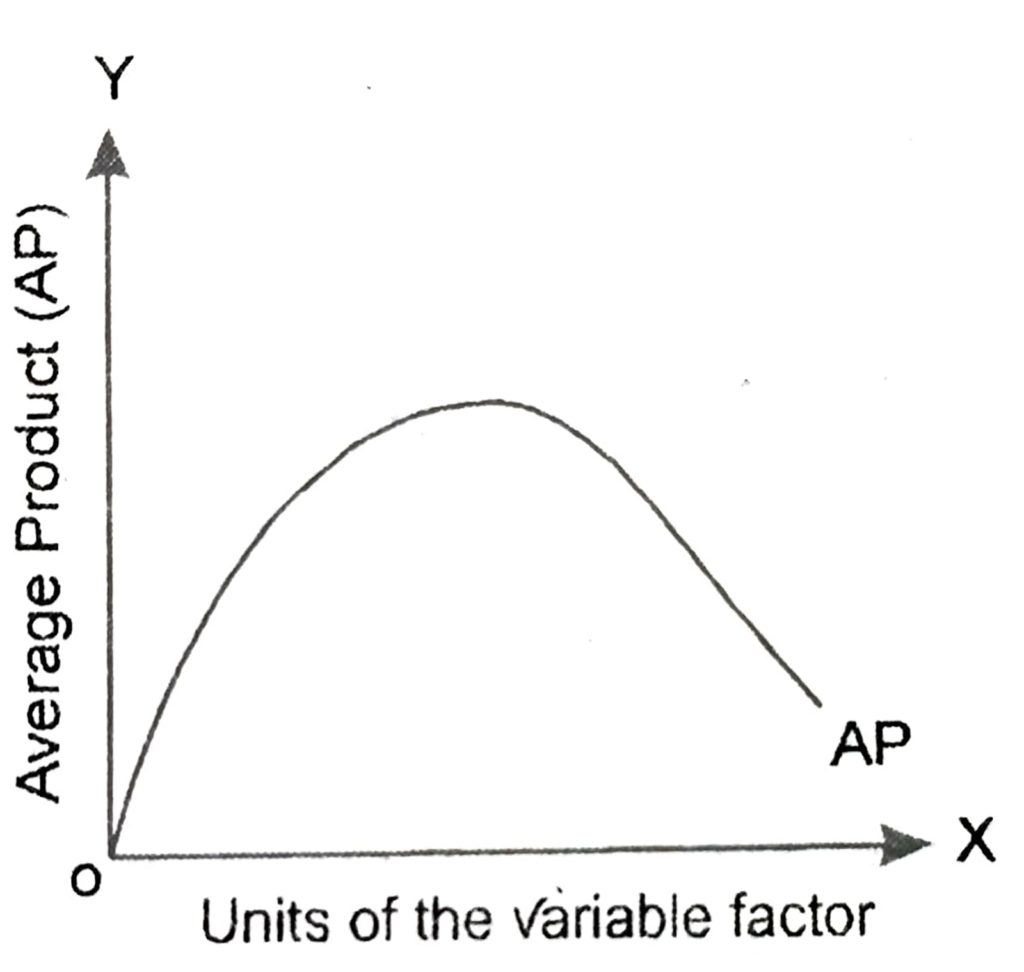NIOS Class 12 Economics Chapter 17 Production Function, Solutions to each chapter is provided in the list so that you can easily browse through different chapters NIOS Class 12 Economics Chapter 17 Production Function and select need one. NIOS Class 12 Economics Chapter 17 Production Function Question Answers Download PDF. NIOS Study Material of Class 12 Economics Notes Paper 318.
NIOS Class 12 Economics Chapter 17 Production Function
Also, you can read the NIOS book online in these sections Solutions by Expert Teachers as per National Institute of Open Schooling (NIOS) Book guidelines. These solutions are part of NIOS All Subject Solutions. Here we have given NIOS Class 12 Economics Chapter 17 Production Function, NIOS Senior Secondary Course Economics Solutions for All Chapters, You can practice these here.
Production Function
Chapter: 17
Module – VII: Producer’s Behaviour
TEXT BOOK QUESTIONS WITH ANSWERS
INTEXT QUESTIONS 17.1.
Q.1. What is meant by production?
Ans. Production may be defined as a process through which a firm transforms inputs into output. It is the process of creating goods and services with the help of factors of production or inputs for satisfaction of human wants. In other words, ‘transformation of inputs into output’ whereby value is added, is broadly called production. Whatever is used in the production of a commodity is called input. For example, in the production of wheat, the use of land, seed, fertilizer water, pesticides, tractors, labour etc. are inputs and wheat is output. The relationship between inputs and output of a commodity depends upon the state of technology because with the help of advanced technology more can be produced with the help of same inputs or same output can be produced with the help of less inputs.
Q.2. Define a production function.
Ans. Production function refers to the functional relationship between physical inputs and physical outputs.
It is expressed in terms of the equation:
Where,
Qₓ = f(l, k)
Qₓ = Production of commodity – X
L – Labour (variable factor)
K – Capital (fixed factor)
Q.3. Distinguish between short run production and long run production function.
Ans. The main difference between the short run and long-run production function is that:
In the short-run all inputs are fixed and in the long-run all inputs are variable. In the short-run the firm varies all of its inputs to find the least-cost combination of inputs. In the short-run, at least one of the input levels is fixed. In the long-run, the firm is making a constrained decision related to use existing plant and equipment efficiently, but there are no constraints determining short-run production.
INTEXT QUESTIONS 17.2.
Q.1. What are Primary inputs? Give example.
Ans. All the inputs are classified into two groups: Primary inputs and Secondary inputs. Primary inputs render services only whereas secondary inputs get merged in the commodity for which they are used. In agriculture, soil, tractor, tools and farmer’s services are primary inputs because they render services only whereas seeds, manure, water and insecticides are secondary inputs because they get merged in the commodity for which they are used.
Q.2. What are Secondary inputs? Give example.
Ans. Materials and energy are considered secondary factors in classical economics because they are obtained from land, labour and capital. Secondary inputs are known as non-factor inputs.
Q.3. Define variable factors of production.
Ans. An input whose quantity can be changed in the time period under consideration. This usually goes by ‘the shorter term fixed input and should be immediately compared and contrasted with fixed factor of production, which goes by the shorter term fixed input. The most common example of a variable factor of production is labour. A variable factor of production provides the extra inputs that a firm needs to expand short-run production.
Q.4. What are the fixed factors of production? Explain with example.
Ans. An input whose quantity cannot be changed in the time period under consideration. This usually goes by the shorter term fixed input and should be immediately compared and contrasted with variable factor of production, which goes by the shorter term variable input. The most common example of a fixed factor of production is capital. A fixed factor of production provides the “capacity” constraint for the short-run production of a firm.
Q.5. Distinguish between fixed and variable factors of production.
Ans. Fixed factors are those factors of production whose quantity cannot be hanged with change in the level of output. For example, the quantity of land, machinery etc., can not be hanged during short run. On the other hand, variable factors are those factors of production whose quantity can easily be hanged with change in the level of output. For example, we can easily change the quantity of labour to increase or decrease the production.
Q.6. Can total product ever decline? If Yes, when?
Ans. Can total product declines, if MPP becomes negative.
Q.7. What happens to TPP when MPP is zero?
Ans. When MPP becomes zero, TPP is maximum.
Q.8. What happens to TPP when MPP increases?
Ans. As long as MPP increases, TPP increases at the increasing rate.
Q.9. Explain the relationship between TPP and MPP.
Ans. There is a close relationship between the marginal product and the total product of an input. For any level of employment of a factor input, if we add up the marginal product for every unit of that factor up to that level, we get the total product of that factor at that level of employment. The relationship between MP and TP has been shown with the help of the following table:


The relationship between TPP and MPP can be explained as given below:
(i) As long as MPP increases, TPP increases at an increasing rate.
(ii) When MPP falls but remains positive, TPP increases but at a diminishing rate.
(iii) When MPP becomes zero, TPP is maximum.
(iv) If MPP becomes negative, TPP starts decreasing.
Q.10. Explain the relationship between APP and MPP?
Ans. The following points show the relationship between MPP and APP.
(i) As long as MPP is greater than APP, APP increases.
(ii) When MPP is equal to APP, APP is maximum and constant.
(iii) When MPP is less than APP, APP decreases.
(iv) MPP can be zero and negative but APP is-never zero or negative.
The relationship between MP and AP has been shown with the help of diagram.

TERMINAL EXERCISE
Q.1. Define production.
Ans. Production is a process of combining various material inputs and immaterial inputs to make something for consumption. It is the act of creating output, a good or service which has value and contributes to the utility of individuals.
Economic well-being is created in a production process, meaning all economic activities that aim directly or indirectly to satisfy human needs. The degree to which the needs are satisfied is often accepted as a measure of economic well-being. In production there are two features which explain increasing economic well- being. They are improving quality-price-ratio of goods and services and increasing incomes from growing and more efficient market production.
Q.2. Define production function.
Ans. Production function shows the relationship between the quantities of productive factors (such labour and capital) used and the amount of production obtained. It states the amount of product that can obtained from every combination of factors, as that the most efficient available methods of product are used.
The production function can thus answer a variable of questions. For example, measure the marginal productivity of a particular factor of production (the change in output from one additional unit of the factor). It can also be used to determine the cheapline combination of productive factors that can be used produce a given output.
Q.3. Distinguish between short period and long period production function.
Ans. (i) Short run production function: A production function that shows the changes in output when only one factor is changed while other factor remains constant is termed as a short run production function. In the above example of production function, labour (L) is considered as the variable factor which can be changed to influence the level of output. The other factor capital (K) is a fixed factor which can not be changed. The underlying theory to the short run production function is the “Law of variable proportion or returns to a factor”.
(ii) Long run production function: A long run production function studies the impact on output when all the factors of production can be changed simultaneously and in the same proportion. So in the long run size of operation of the firm can be expanded or contracted depending on the fact that the factors of production are increased or decreased. The underlying theory to the long ran production function is the returns to scale.
Q.4. What is meant by TPP?
Ans. TPP is the total amount of a commodity that is produced with a given level of factor inputs and technology during a given period of time. For example, 2 units of labour combined with 2 units of capital can produce 26 fans per day. Here 26 fans is the total physical product which is produced with the given level of inputs (labour and capital).
Q.5. Define APP.
Ans. Average Physical Product (APP): APP is the output produced per unit of input employed. It can be obtained by dividing TPP by the number of units of variable input. So APP = TPP/L where L is the units of labour. For example, if 10 workers make 30 chairs per day, the APP of a working per day will be 30 ÷ 10 = 3 chairs. If the productivity of a factor increases, it implies that the output per unit of input has increased.
Q.6. Define MPP.
Ans. Marginal Physical Product (MPP): MPP of an input is the additional output that can be produced by employing one more unit of that input while keeping other inputs constant. For example, if ten tailors can make 50 shirts per day and 11 tailors can make 54 shirts per day, the marginal product of 11 workers will be 54 – 50 = 4 shirts per day.
Q.7. Explain the relationship between TPP and MPP.
Ans. The relationship can be explained in three cases:
(i) Initially, as the quantity of variable input is increased, TPP rises at an increasing rate. In this phase, TPP also rises.
(ii) As more and more quantities of the variable inputs are employed, TPP increases at a diminishing rate. In this phase, MPP starts to fall.
(iii) When the TPP reaches its maximum, MPP is zero. Beyond this point, TPP starts to fall and MPP becomes negative.
Q.8. Explain the relationship between APP and MPP.
Ans. The quantity of total output produced per unit of a variable input, holding all other inputs fixed. Average physical product, usually abbreviated APP, is found by dividing total physical product by the quantity of the variable input. Average product, which more often goes by the shorter name Average Product (AP), is one of two measures derived from total physical product. The other is marginal physical product.
Average physical product is the output produced per unit of input used. Average physical product is more often termed average product. Marginal Physical Product is the change in total physical product resulting from a change in the number of workers. Marginal physical product indicates how the total production changes.
Q.9. Explain the law of variable proportion with the help of a schedule and a diagram.
Ans. Law of variable proportion: The law of variable proportions is a short period production law. It is also called returns to a factor. Let us first understand the meaning of variable proportions. In a production process when only one factor is varied and all other factors remain constant, as more and more units of variable factor are employed, the proportion between fixed and variable factors goes on changing. So it is termed as the law of variable proportions. This law states that if you go on using more and more units of variable factor (labour) with fixed factor (capital), the total output initially increases at an increasing rate but beyond a certain point, it increases at a diminishing rate and finally it falls. This law was initially called the law of limiting returns Marshall who applied the law only in agriculture sector but modern economist called it the law of variable proportion and proposed its applicability to all the sectors of the economy.
Assumption of the law:
The law operates under the following assumptions:
(i) The firm operates in the short run.
(ii) There is no change in technology of production.
(iii) The production process allows the different factor ratios to produce different levels out output.
(iv) All the units of variable factor are equally efficient.
(v) Full substitutability of factors of production is not possible.
The production of variable factors with the help of the following table:

This law can also be explained with the help of figure given below:

The figure given above shows that TPP increases from O to B but there are two parts of this increase. First is from O to A in which TPP increases at an increasing rate. This is in the I phase of the law. In this phase MPP increases from O to C.
In the second part from A to B TPP increases at a diminishing rate. This is in the II phase of the law. In this phase MPP decreases from point C to point D. At point D MPP is zero. TPP is maximum at point B.
After point B, TPP starts falling. This in III phase of the law. In this phase, MPP becomes negative after point D.
Q.10. What are the reasons of the operation of law of variable proportion?
Ans. The law of variable proportions is universal as it applies to all fields of production. This law applies to any field of production where some factors are fixed and others are variable. That is why it is called the law of universal application.
The main cause of application of this law is the fixity of any one factor. Land, mines, fisheries and house building etc. are not the only examples of fixed factors. Machines, raw materials may also become fixed in the short period. Therefore, his law holds good in all activities of production etc. agriculture, mining, manufacturing industries.
Q.11. What are the general shapes of APP and MPP?
Ans.

The average physical product curve is a graphical representation of the relation between average physical product and the variable input. The average physical product curve for Gargantuan Taco production is displayed to the right.
The “general” slope of this curve is negative, with per unit output lower for larger workforces. However, the average physical product curve is actually “hump” shaped, with a positive slope giving way to a negative slope. Consistent with the numbers in the table, the curve reaches a peak of 25 Gargantuan Tacos at both 2 and 3 workers, before declining.
Marginal Physical Product Curve

The marginal physical product curve is a graphical representation of the relation between marginal physical product and the variable input. The marginal physical product curve for Gargantuan Taco production is displayed to the right.
The “general” slope of this curve is negative, with incremental output declining for larger workforces. However, the marginal physical product curve is actually “hump” shaped, with a positive slope giving way to a negative slope. Consistent with the numbers in the table, the curve reaches a peak of 30 Gargantuan Tacos for the second worker.
Some Other Important Questions For Examinations
Very Short Answer Type Questions
Q.1. Explain the concept of a production function.
Or
What is ‘Production Function’?
Or
Give the meaning of Production Function.
Ans. Production Function: It refers to the functional relationship between physical inputs and physical outputs.
It is expressed in terms of the equation:
Qₓ = f(L, K)
Where, Qₓ= Production of commodity-X
L = Labour(Variable Factor)
K = Capital (Fixed Factor)
Q.2. What is the total product of an input?
Or
What is total physical product?
Or
Define T.P.
Ans. Total Product (T.P.): Total Product (T.P.) is the sum total of output produced by all units of labour along with other factors of production. In other words, it is defined as total quantity of goods and services produced by a firm in a given period of time.

The shape of TP curve is steeply from the origin then begins to flatten and eventually drops off.
Q.3. What is the average product of an input?
Ans. Average Product (AP): Average product is per unit production of the variable factor. It is obtained by dividing the total product by the number of units of variable inputs. The average product curve is hump shape or inverted ‘U’.

Q.4. What is the marginal product of an output?
Or
What is the marginal product of an output?
Ans. Marginal Product (M.P.): Marginal product is an addition made to the total product by employing an additional unit of variable input, keeping the other inputs unchanged.

The marginal product curve is generally inverted ‘U’ shape.

Hi! my Name is Parimal Roy. I have completed my Bachelor’s degree in Philosophy (B.A.) from Silapathar General College. Currently, I am working as an HR Manager at Dev Library. It is a website that provides study materials for students from Class 3 to 12, including SCERT and NCERT notes. It also offers resources for BA, B.Com, B.Sc, and Computer Science, along with postgraduate notes. Besides study materials, the website has novels, eBooks, health and finance articles, biographies, quotes, and more.



